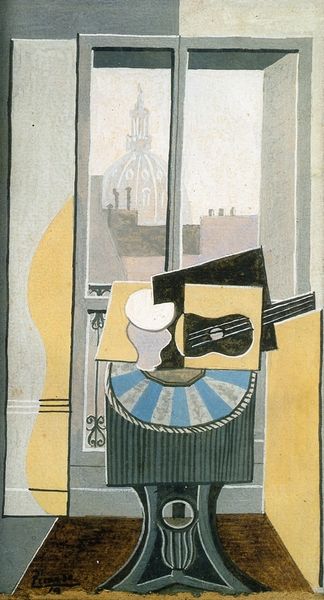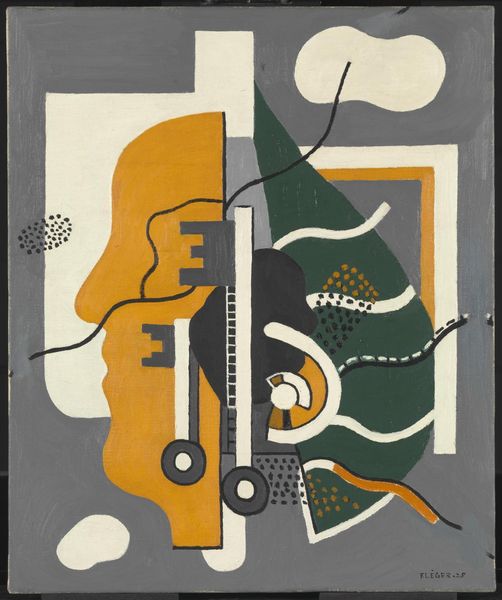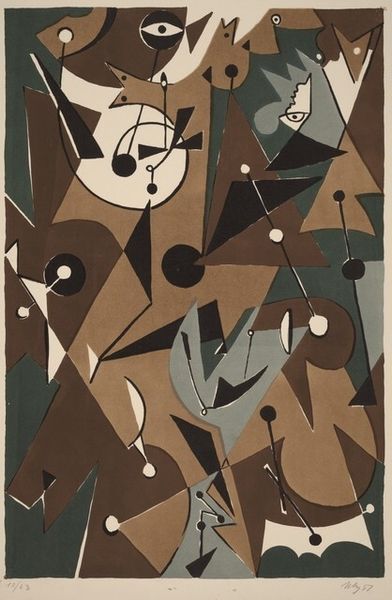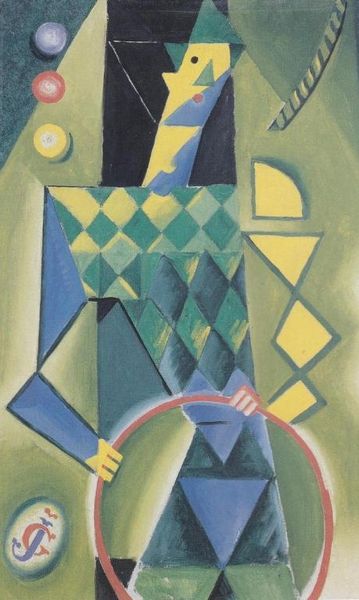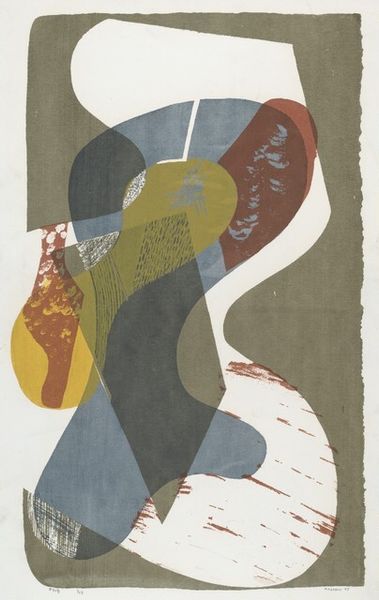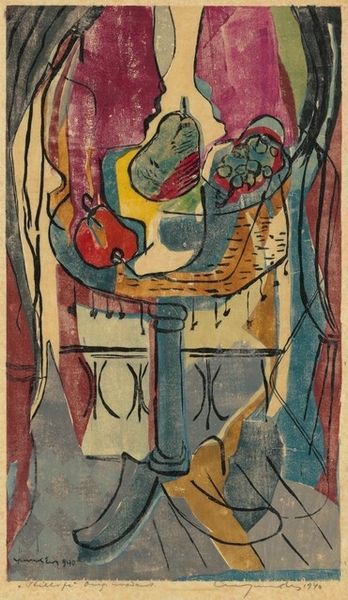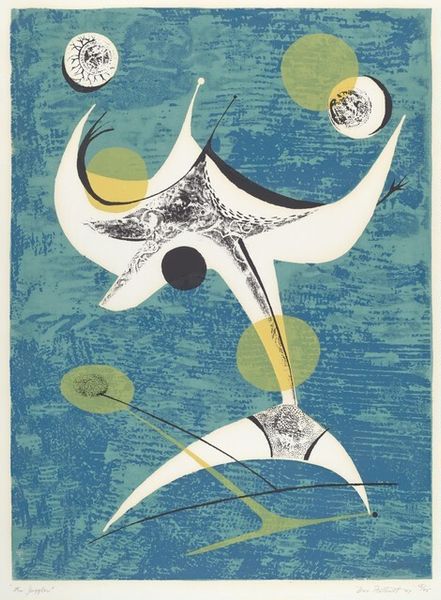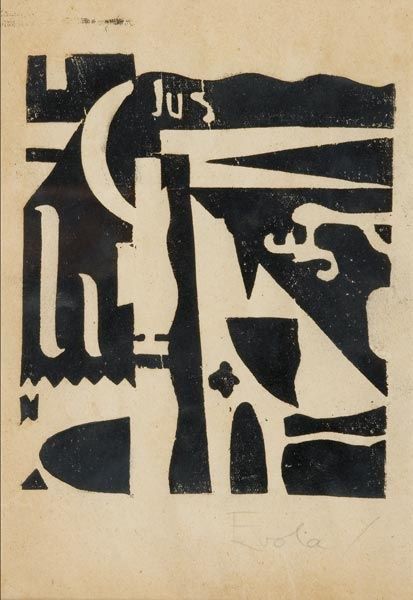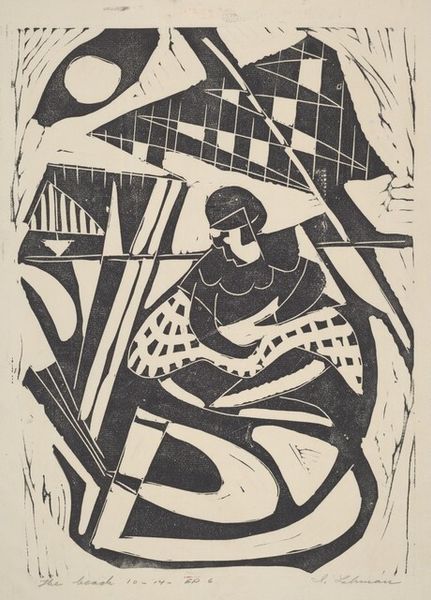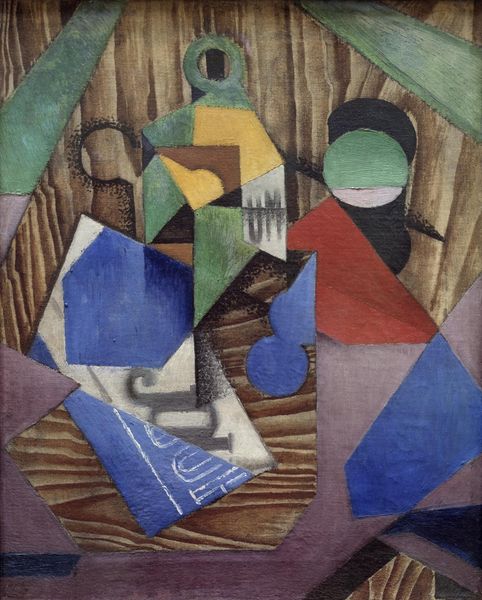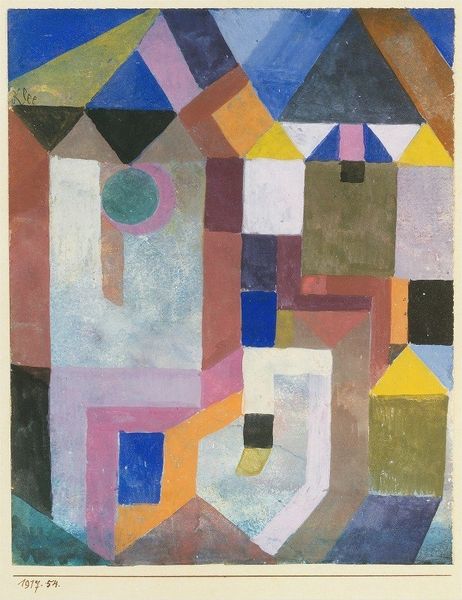
# print
#
geometric
#
abstraction
#
modernism
Dimensions: image: 314 x 255 mm sheet: 445 x 284 mm
Copyright: National Gallery of Art: CC0 1.0
Editor: This is "Weather Contraptions," a print by Hananiah Harari, created in 1940. The geometric shapes are strangely playful despite the title, which suggests something functional, perhaps even ominous. How do you interpret this work? Curator: The title, indeed, plays ironically against the non-representational imagery. Made on the cusp of World War II, the "contraptions" can be seen as stand-ins for machines of war, abstracting anxieties about technological advancements and their potential for destruction into these seemingly benign geometric forms. Do you see how the arrangement could subtly critique institutional reliance on technological solutions, perhaps? Editor: I can see that. So, instead of focusing on specific machinery, he’s commenting on the broader societal trust in these ‘contraptions,’ despite their potential consequences. The art world really engaged with these conversations, right? Curator: Precisely. Harari was part of a generation deeply affected by socio-political changes and questioned established power structures through their art. Consider the role museums play in validating or critiquing such works, as "Weather Contraptions" challenges assumptions about technology's progress. How might it influence public opinion, for instance? Editor: That's fascinating. I hadn't thought about the museum's role in amplifying this kind of social critique through art. So, viewing art like this becomes almost a political act itself. Curator: Exactly! Looking closely at the cultural moment, “Weather Contraptions" speaks to the institutional power and potential embedded within abstract art, inviting viewers to consider the influence of the broader cultural context on the artwork and themselves. Editor: That makes so much sense! I’ll definitely consider these political and cultural influences when looking at other pieces from this time. Thanks! Curator: My pleasure! Art is often at its best when in conversation with its context, offering fresh perspectives on society.
Comments
No comments
Be the first to comment and join the conversation on the ultimate creative platform.

